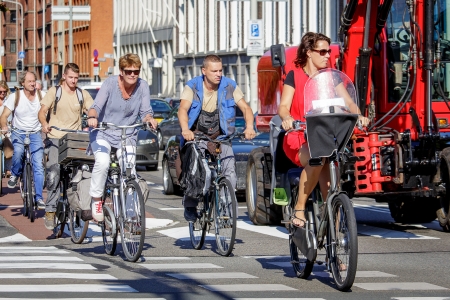Whether traffic density on bicycle tracks, and the sometimes large differences in speed and mass between bicycle track users, adversely affect road safety cannot be determined on the basis of empirical data.
At specific locations and times of day, the bicycle tracks in major cities are too narrow to cope with the traffic volumes, but whether this affects cyclist road safety is unknown. In a questionnaire survey among A&E-treated cyclists in the period from July 2020 to June 2021, 80% reported that traffic density had been low at the time of the crash. Yet in crashes in which high traffic density may have been a factor, such as collisions or in forced swerving manoeuvres, 15% to 19% reported that there had been a fair amount of traffic at the time of the crash [4].
Regularly, bicycle tracks are used by many different kinds of vehicles with sometimes large differences in speed, mass, and volume: ordinary bicycles, pedelecs, light mopeds, cargo bikes and, in the rural area, mopeds and speed pedelecs as well. On bicycle tracks, light moped riders travel on average at speeds of 32 km/h, which makes them considerably faster than cyclists (18km/h) or pedelec users (21km/h) [23]. Moreover, (light) mopeds are more than 50 kg heavier and, including mirrors, more than 15 cm wider than bicycles or pedelecs. In general, differences in mass and speed adversely affect safety (see, for example, SWOV fact sheet Sustainable Road Safety), but to what extent this also applies to bicycle tracks is not yet known.
For more information on possible safety effects of high traffic density and vehicle diversity on bicycle tracks, see SWOV fact sheet Infrastructure for pedestrians and cyclists.
